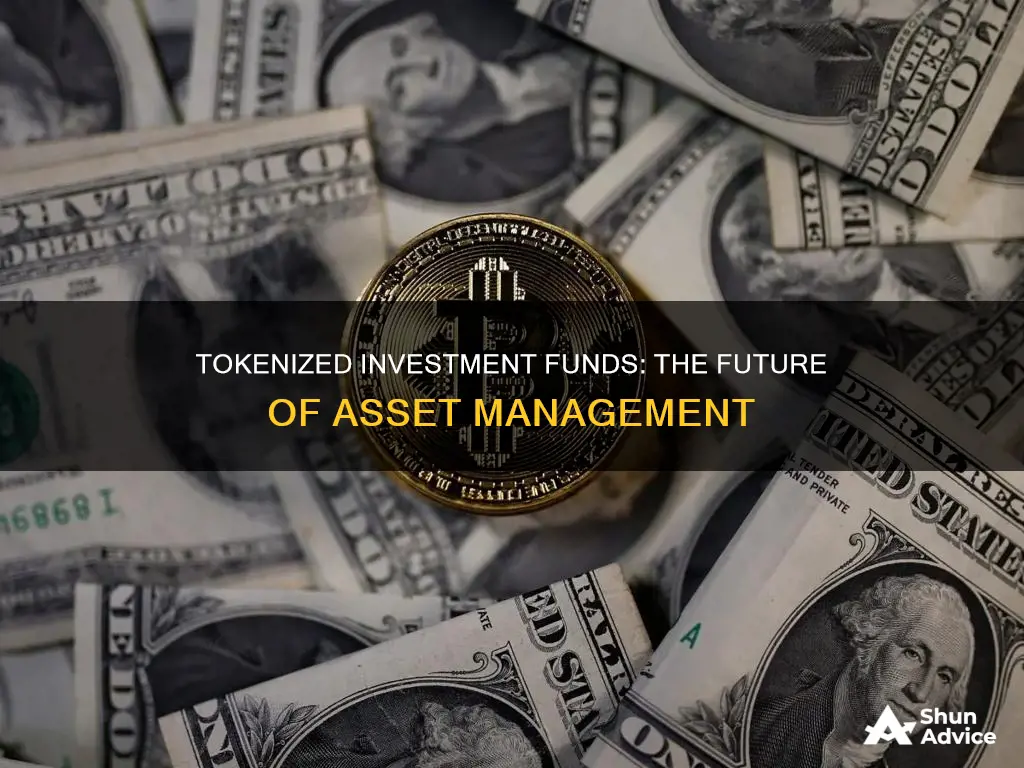
Tokenized investment funds are an innovative approach to investing that utilizes blockchain technology to convert investment funds into digital tokens, providing several benefits to investors and fund managers. Tokenization allows for the fractionalization of fund ownership, making it more accessible to a broader range of investors and reducing barriers to entry such as high minimum investment requirements. It also improves liquidity, enabling investors to buy and sell their holdings more easily on secondary markets. Additionally, tokenization enhances operational efficiency by automating processes and reducing the need for intermediaries, resulting in lower fees. Tokenized funds can be particularly attractive for alternative investment assets such as private equity, hedge funds, and real estate, which have traditionally been out of reach for many investors due to their high entry costs and long lock-up periods. Tokenization also offers improved transparency and enables direct access to fund information for investors. Despite the benefits, there are challenges and regulatory hurdles that need to be addressed, including legal and compliance issues, as well as concerns around security and investor protection. Overall, tokenized investment funds have the potential to revolutionize the investment landscape by making alternative investments more accessible, efficient, and liquid for investors.
What You'll Learn

Tokenized funds improve liquidity and lower barriers to entry
Tokenization is the process of representing shares on a digital infrastructure, such as a blockchain network. This allows shares in a fund to be freely traded on a distributed ledger, improving liquidity and reducing barriers to entry.
Tokenization can lower the minimum investment amount, making it easier for a wider range of investors to access certain asset classes. For example, tokenization allows for fractional ownership of assets, meaning that investors can purchase smaller portions of an asset. This was demonstrated by a building worth USD 1 million, divided into 10 apartments worth USD 100,000 each. Without tokenization, the minimum investment for an investor would be to buy an entire apartment for USD 100,000. However, with tokenization, the building can be divided into 1 million tokens, allowing investors to invest smaller amounts and lowering the barriers to entry.
Tokenization also improves liquidity by creating a secondary market for shares, making it easier for investors to buy and sell their holdings. This is particularly beneficial for less liquid assets, such as private equity or real estate funds.
Additionally, tokenization can automate many processes, such as dividend distribution and asset management, reducing the need for intermediaries and lowering fees for investors. It also provides a secure and transparent record of transactions, increasing transparency for investors.
Overall, tokenized funds have the potential to improve liquidity and lower barriers to entry, making investing more accessible and flexible for a wider range of investors.
International vs Domestic Funds: Where Should You Invest?
You may want to see also

They are created using blockchain technology
Tokenized investment funds are created using blockchain technology. This technology enables the conversion of assets or ownership rights into digital form, specifically, into crypto tokens or "coins". These tokens are hosted on a blockchain and represent shares in a company or fund.
The process of tokenization involves using specialized software to create smart contracts with embedded information. These smart contracts contain records of ownership of an asset and programmable, automated rules for the transfer of ownership. For example, the rules may dictate how and when an asset can be bought or sold.
Tokenization offers several benefits over traditional investment funds. It improves liquidity by allowing investors to buy and sell tokens more easily on secondary marketplaces. It also reduces barriers to entry by enabling fractional ownership of assets, meaning investors can purchase smaller portions of a fund. Additionally, tokenization can enhance transparency, as information on crucial metrics like returns, ownership history, and transaction history can be easily accessed on a public, distributed ledger.
Furthermore, tokenization simplifies and automates many processes, reducing the need for intermediaries and associated fees. For instance, smart contracts can automate dividend distribution, capital calls, and asset management. Tokenization can also improve data integrity by allowing identical datasets to be shared across various parties in a transparent and real-time manner, reducing the need for duplicative record-keeping.
While tokenized investment funds offer numerous advantages, there are also challenges and risks associated with them. Regulatory uncertainty is a significant hurdle, and the evolving regulatory landscape creates compliance risks. Additionally, digital asset thefts, hacking attempts, and the anonymity of cryptocurrency dealings raise concerns about investor protection.
Invest in a Roth IRA: A Beginner's Guide to Retirement Planning
You may want to see also

They are an alternative to traditional investment funds
Tokenized investment funds are an alternative to traditional investment funds. They are a type of investment fund that uses blockchain technology to issue tokens representing ownership in the fund. These tokens, which are digital assets, can be bought, sold, and traded like other cryptocurrencies.
Tokenized funds offer several advantages over traditional funds. Firstly, they provide greater accessibility by lowering the barriers to entry. Through tokenization, funds are converted into smaller, tradable tokens on the blockchain, allowing investors to purchase a small percentage of the fund rather than investing a large amount of money upfront. This fractional ownership democratizes access to high-growth asset classes that were previously out of reach for many due to high entry costs.
Secondly, tokenized funds improve liquidity. Tokens can be freely traded on a distributed ledger, providing investors with greater flexibility and control over their investments. This is particularly beneficial for investments in illiquid assets, such as private equity or real estate, as it increases liquidity and potentially lowers investment minimums.
Thirdly, tokenized funds enhance transparency. Blockchain technology offers a unique level of transparency, as all transactions are recorded on a public, distributed ledger. This allows investors to access information on crucial metrics like returns, ownership history, and transaction history, enabling them to make more informed investment decisions.
Additionally, tokenized funds can reduce costs. The use of blockchain technology and smart contracts automates many processes, such as dividend distribution and asset management, reducing the need for intermediaries and associated fees. Tokenization also eliminates the need for manual record-keeping, further reducing costs and the risk of human error.
Lastly, tokenized funds can provide broader accessibility to investors globally. By removing geographical barriers, tokenized funds allow investors from different countries to participate in funding opportunities that may not have been accessible through traditional funds.
Borrowed Funds: Smart Real Estate Investment Strategy?
You may want to see also

Tokenized funds are a way of raising capital
Tokenized funds offer several benefits over traditional funds. They foster greater diversification for investors, improve efficiency, and unlock global capital opportunities for fund managers. Tokenization also reduces barriers to entry, making it easier for smaller investors to participate. The use of blockchain technology provides a secure and transparent record of transactions, increasing trust and transparency among investors.
Additionally, tokenized funds can automate many processes, such as dividend distribution and asset management, reducing fees associated with intermediaries. They can also remove geographical barriers to investment, providing broader accessibility to a global investor base.
Tokenized funds have the potential to offer greater liquidity compared to traditional funds. Investors can buy and sell their holdings more easily on secondary marketplaces, increasing their flexibility and control over their investments.
While tokenized funds offer numerous advantages, it is important to consider the challenges and risks associated with them. These include potential price volatility, fraud, and regulatory issues. Fund administrators may also face challenges in processing blockchain transactions using traditional software. Despite these challenges, tokenized funds present a compelling opportunity for investors and fund managers to participate in profitable and well-diversified investment vehicles.
Mirae Asset Tax Saver Fund: A Smart Investment Move?
You may want to see also

They are of particular interest to institutional and high-net-worth investors
Tokenized investment funds are of particular interest to institutional and high-net-worth investors due to their ability to provide access to alternative investments that were previously out of reach. Traditional alternative investments like private equity, hedge funds, and venture capital have the potential for high returns but often come with high entry costs and long lock-up periods. Tokenization solves this problem by converting funds into smaller, tradable tokens on the blockchain, making these investments more accessible and fostering greater diversification for investors.
For example, tokenization allows for fractional ownership, where investors can purchase a small percentage of a fund instead of having to invest a large amount of money upfront. This makes it possible for smaller investors to access investment opportunities that were previously only available to those with significant capital.
Tokenized funds also improve efficiency and unlock global capital opportunities for fund managers. The use of blockchain technology provides a secure and transparent record of transactions, increasing trust among investors and potentially attracting more sizable investments. Additionally, smart contracts embedded in tokenized assets can automate processes like dividend distribution and asset management, reducing fees and improving overall efficiency.
The benefits of tokenized funds extend beyond just the investors and fund managers. Service providers also stand to gain from reduced reconciliation needs as the blockchain acts as a single source of truth for all fund data. The potential for new revenue streams is also created, as service providers can develop and offer specialized services tailored to the tokenized fund landscape, such as custody of digital assets.
While tokenized funds offer numerous advantages, it is important to consider the challenges and risks associated with them. Regulatory issues, legal status, AML & KYC compliance, market volatility, and cyber security are some of the key challenges that need to be addressed to ensure the successful adoption of tokenized funds by institutional and high-net-worth investors.
Mid-Cap Funds: Worthy Investment or Risky Business?
You may want to see also
Frequently asked questions
Tokenized investment funds are similar to traditional funds, but with one key difference: the shares are on the blockchain. These funds use blockchain technology to issue tokens, which represent ownership in the fund. These tokens are digital assets that can be bought, sold, and traded like cryptocurrencies.
A fund can create (or "mint") its own tokens on a blockchain of its choice. These tokens represent shares in the fund, so holding one token is like holding a traditional share. Shareholders in the fund buy tokens by transferring fiat currency or cryptocurrency to the fund, and the fund transfers its tokens to the investor's wallet.
Tokenized funds offer several benefits, including increased liquidity, reduced barriers to entry, improved transparency, and enhanced operational efficiency. They also enable fractional ownership, meaning investors can buy a small percentage of the fund rather than investing a large amount upfront.
Tokenized funds face regulatory, legal, and technical challenges. There may be cross-border regulatory issues and uncertainty in various jurisdictions. Additionally, there is a limited legal framework specifically addressing tokens and smart contracts. Other potential risks include market volatility, cyber security threats, and the potential for fraud.







